Holiday season is fast approaching, and I have bubbly on the brain.
I’ve been fortunate enough to be surrounded by sparkling wines virtually my entire career. From vintage Krug to fizzes in a can, I have sampled many expressions of this joy-inducing elixir.
There was one region that remained a mystery, one that intrigued me greatly from the first taste. The wines weren’t showy, more of the intellectual sort, that emanates class and style. I made my mind up that I must one day get to know this region. On a recent trip to Italy, I was finally able to get a full immersion version, which wound up re-arranging my head, when it came to sparkling wines. Somewhere between Brescia and Provaglio d’Iseo I fell in love with the bucolic landscapes and an easy-going, yet compelling spirit of the place. My sincere hope is that by the time you finish reading this, you will be compelled to run out and buy a bottle.
I am speaking of one of Italy’s best-kept secrets, the Franciacorta region, a mere hour drive from Milan.
The names Franzacurta and Curtefranca are believed by some to mean “Court of the Franks,” referring to the area established by the Frankish empire in the 8th century. Others think that it refers to a tax sanctuary for Cluniac monks. Curiously, the monks were exempt from taxation that burdened the rest of the locals. As the story goes, these sages shared their multi-century repository of agricultural and viticultural knowledge with the local farmers and were rewarded with this exemption. They, in turn, returned the value to the land, gaining more knowledge and perfecting their craft. The first references to the secondary fermentation were found in the writings of one of them, who referred to the process as “biting” Who knew that the monks were the first to detect and zero in on Franciacorta’s fierce spirit?
The region’s sparkling wines are made in 19 cooperatives located in the province of Brescia, Lombardy. This tiny, 600 square kilometer area is worth getting to know. Besides being home to 116 wineries that craft world-class, terroir-driven sparkling wines, there is an intense culinary scene for a discerning gourmand, historic castles, chic accommodations, and stunningly serene scenery, courtesy of gorgeous Lake Iseo, with its enchanted island, Monte Isola.
Apart from Proseccos from Cartizze, it’s Italy’s most renown and prestigious wine appellation. You will find the wines from there on the wine lists in most well-known restaurants, right next to the finest Champagnes.
Sparkling wine production is a game of patience, not instant gratification, as demonstrated by any region that specializes in Metodo Classico (or Methode Champenoise as it is originally known). The wines that are made in this method undergo 2nd fermentation in the bottle. In 1993, new rules and regulations made metodo classico the only recognized sparkling winemaking method in the region.
Franciacorta has been often likened to the Champagne region of France—both use the same bottle-fermentation method and international grape varieties. Many believe that it is Italy’s version of Champagne. Which is understandable, as some of the examples I tasted could easily compete or outperform similar samples from France.
Unlike far more known Prosecco and other Italian regions that produce sparkling wines, Franciacorta uses international, vs indigenous varieties, which are pricier to cultivate. The grapes used are Chardonnay, Pinot Noir, Pinot Blanc, and most recent minor player, currently in small-scale experimentation stage, a native variety called Erbamat. This late-ripening variety delivers higher acid levels, so minor quantities may well make the wines brighter and more energetic. Small planted parcels are being studied as part of ongoing clonal and cellar performance research. Up to 10% Erbamat inclusion was permitted in the final blend starting with the 2017 vintage, so it should be interesting to taste the finished wines moving forward.
Pinot Blanc originally was the mainstay, with optional additions of Pinot Noir and Pinot Gris, essentially using the Charmat method. Back in 1961, the first metodo classico wines were fashioned by Guido Berlucci. The wines were well received, and as the region evolved, more entrepreneurs purchased land. Chardonnay became the dominant variety, comprising up to 85% of the 7000-acre total plantings in the area. Part of this evolution were exhaustive viticultural and oenological studies, that pointed to this varietal fairing exceptionally well in Franciacorta soils.
Let’s be frank. The Champagne region reigns supreme for pioneering and popularizing secondary fermentation. Considering the challenging weather conditions in the area, plagued by persistent weather events causing ripening challenges, they deserve a lot of credit for fashioning great wines and creating a worldwide phenomenon.
Fortunately, Franciacorta doesn’t have any issues with ripening fruit. Unlike Champagne, they don’t have to wait for an exceptional year to make it a vintage year; extraordinary vintages appear to be a commonplace occurrence. The only difference that was highlighted during my visit is that, over the last few years, the harvest has started earlier and earlier.
There is the historical context. Records indicate that the Champagne region was producing some version of sparkling wines since the fifteenth century and experienced a boom in the nineteenth. Franciacorta is no slouch, sparkling wines have been made there since the sixteenth century, with the region beginning to flourish in the 1950s.
And unquestionably, relative to the Champagne region, it is a very small area; roughly one-tenth the size. Compared to France’s 308 million bottles, it produces roughly around 18 million. Conversely, most of the wines are locally consumed, with only 10% of Franciacorta’s annual production is exported around the globe. Around 10% of that production originates from producers such as Bellavista, Ca’ del Bosco, Contadi Castaldi, Guido Berlucchi who have large property holdings and high-tech production facilities. Yet, those large-scale wineries don’t feel as such. They are more like a compilation of small wineries, interwoven into one.
The differences between these two regions are greater than their similarities. Besides pure geography, Franciacorta being located slightly further south of the equator (45° North vs. Champagne’s 49° North,) it is rife with microclimates. There are as many terroirs as there are whole or partial vineyards plots. Post-harvest, small-scale fermentation vessels are used to segregate different vineyard picks that the winemaker later blends into the final cuvée. An average vineyard size is under five acres. Franciacorta’s producers and growers are one and the same, whereas in Champagne many of the producers are large-scale, who either purchase grapes or base wines, or both. As I shared earlier, there a few larger wineries in Franciacorta that export globally, but the typical producer is relatively tiny. Hand-harvesting is the norm, whereas in Champagne it is often mechanized. Notably, Franciacorta is trending organic and is uniquely pursuing zero dosage, or no sugar added after disgorgement, a key distinction vis a vis France.
Dosage is a dose of liquor (a blend of wine and sugar,) added to the wines post-disgorgement, that contributes mightily to the wine’s flavor profile, personality, and functionality. The dosage designations are identical to those of Champagne:
- Pas Dosé, with sugar content up to 3 g/l
- Extra Brut up to 6 g/l
- Brut less than 12 g/l
- Extra Dry – 12-17 g/l
- Sec or Dry – 17-32 g/l
- Demi-Sec – 32-50 g/l
- Doux – greater than 50 g/l
Zero dosage bottlings bear an array of names, such as Brut Nature, Dosage Zéro, Pas Dosé, but make no mistake; behind the clever label titles lies superb quality. While quite uncommon in France, they quickly became some of the top sellers with Italian consumers. Fresh, pure, full of unbridled energy and boasting distinctive character and focus, as well as hefty dosage (pun intended;) of finesse they tend to exhibit more minerality and fruit delineation.
My theory is that the region’s climate, moderated by the lovely Lake Iseo, facilitates physiologically ripe fruit, and therefore, allows the wines to stand on their own, without artificial aid.
The moderate climate and alluvial soil, in large part, hold the key; aided by what I refer to as, “human terroir”: the quality-minded stewards of the land. The Alps, that formed as the result of glacial activity, play a crucial role, sheltering the region from Central Europe’s continental perils. The picturesque rolling hills are not only postcard-worthy, but they also function as guardians of mineral-rich gravel deposits and facilitate drainage. Sunny summer days are followed by cool nights with the temperatures staying consistent, creating great growing conditions. Grapes ripen evenly while retaining bright acid, essential to the production of sparkling wines. The vineyards are mainly located in growing area of the Val Camonica, a large valley at the foot of Central Alps. This basin is tantamount to a tunnel, funneling cool winds from the Dolomites, keeping the hillside vineyards well-ventilated and relatively disease-free—a “Goldilocks” effect of sorts, when everything seems to work just right.
Supported by the stellar sparkling wines, the Franciacorta DOC was created in 1967. Thanks to the dramatic rise in their quality, the status was upgraded to DOCG in 1995, the highest classification in Italy.
Much of the credit goes to the viticultural governing body, Consorzio per la Tutela del Franciacorta, that is an association of producers responsible for creating procedures and protocols for uniformity and quality of the product. It was formed in 1990. Its outgoing President Maurizio Zanella of Ca’del Bosco will be handing over the reins to Silvano Brescianini of Barone Pizzini. Both are legends in their community with leadership skills to spare.
Early on, Consorzio’s leadership had wine growing vs grape growing in mind. In that spirit, they lifted the limits on varietals grown, promoted lower yields (60 hectoliters per hectare, one of the lowest in the world) utilizing low vigor rootstocks with higher planting density (4 to 5 vines per acre), staunchly advocated hand harvesting and longer bottle aging requirements. They introduced new trellising techniques for training vines, such as Guyot and spurred cordon vs. traditional pergola, gentler fruit pressing, more diligent, innovative, sophisticated cellar practices—all with a single-minded focus on quality vs quantity. Today, the area prides itself on exceptionally stringent rules. The cellar and wine makings protocols are far stricter than that of their French counterparts. I was stunned to learn that these guidelines are continuing to trend that way. Apparently, the producers are petitioning the Italian Ministry of Agriculture for stricter regulations. That’s an equivalent of you and me approaching our boss and asking if we could get a larger workload for the same pay. What an impressive level of self-discipline.
As astounding as this is to hear, once you get to know the region a little, it starts to make more sense. One may hypothesize that there are several factors at play. Italian consumers are discerning, nearly by default. So much good wine is produced right in their backyard, as a business, you better step up or else. Generally, the world of wine has gotten exponentially more crowded, with consumers worldwide being presented with a myriad of choices. Strictly speaking, Franciacorta’s main competitors are Champagne and Prosecco. To carve out an edge, they must always strive for brilliance.
The funny thing is, that’s not what motivates Franciacorta producers. Good old-fashioned values to deliver a top-quality product does. I heard it repeatedly, at every winery I visited, large or small. None were interested in cutting corners or complained about highly competitive markets or the hard work that goes into production, while, due to the nature of the product, compensation can take years. They bet their businesses, their very livelihood, on a single simple factor—uncompromising and unrelenting pursuit of perfection. The other? They strive to leave the land in better condition than they inherited. Organic movement is on steep rise; I would not be at all surprised to learn someday soon that the entire region is 100% organic.
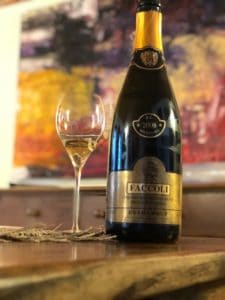
I fell head over heels in love with the sexy Saten, meaning “silky,” which is only produced in Brut version. Just as the designation sounds, it’s a seductive, satiny siren, made from white grapes, and resembles Blanc de Blanc or perhaps a fine Cremant. It is, however, fashioned with lower atmospheric bottle pressure (5 bars or under) so the wine is softer, smoother, creamier, with somewhat finer bubbles. It was first introduced by Maurizio Zanella of Bellavista winery and shared with the rest of the producers so that the whole community can benefit and engage. That’s the thing about Franciacorta’s winemaking community, it is not the least bit territorial. Camaraderie and information sharing are the norm. Everyone is happy to recognize and recommend each other’s wines, and the spirit is all about the good of the whole.
One of the leading wineries serves as a powerful embodiment of Franciacorta values is a historic winery, Ca’ del Bosco. Founded in 1968, it boasts state-of-the-art vinification and cellaring facilities. It won continuous critical acclaim and is held in the highest esteem worldwide, broadly regarded as one of Italy’s top producers of sparkling wines. Translating to “House of the Wood,” as an homage to grand chestnut trees on the property, their first vineyards were planted in 1968. It now has 110 vineyards showcasing a variety of sites and elevations, with over 600 acres under vine, featuring plantings of Cabernet Sauvignon, Cabernet Franc, Chardonnay, Pinot Noir, Pinot Blanc, Merlot, and a small amount of Carménère for their still wine’s programs.
In 2008, a state-of-the-art grape washing system, which removes impurities, such as insecticides and insects was installed. A pioneering practice in Franciacorta, it was motivated by a quest for quality and consistency. Notably, this process is not about sterilization and impacting the flavor in any way and is strictly about preserving the purity. Ca’del Bosco also patented a corking mechanism, that injects nitrogen into the bottle, which reduces sulfites, part of their ongoing commitment to innovation and constantly improving the final product. It is also well-known for exceeding the DOCG’s minimum requirement for lees aging. Ca’del Bosco routinely and voluntarily adds up to 24 additional months to their aging regimens, depending on the category of the wine.
Innovation is one of Franciacorta’s hallmarks. One of my favorites during the visit, Ferghettina winery, has come up with a curious concept – square bottom bottles, starting with 2013 vintage. The reasoning behind this shape is that it gives a larger surface area for yeasts to settle, leading to what is known in microbiology as “autolysis”: a process referring to the enzymatic self-destruction of yeast cells. The process releases flavor components, proteins and amino acids, that advances and expands the flavor profile.
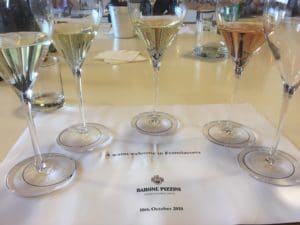
Franciacorta is making a powerful case for the sparkling category, producing superior wines that are organic, lower in sugar and great for aging. Without a lot of fanfare, they do the right thing at every turn, showing the world how a small but dedicated community over time can raise the bar.
The region will never dominate the markets due to inherently small production levels, which, in my book, is a bonus. In a way, it facilitates their perpetual quest for exceptional quality. Smaller guys must work harder to stand out, avoid being risk-averse, push the proverbial envelope and always add value.
And the value is unmistakable. Often inconspicuous but infinitely substantive, these sparklers deliver. For the price points, I would choose Franciacorta every time over other regions. Each bottling carries with it what I treasure the most—integrity.
A fusion of passion and patience, Franciacorta wines are soulful, sincere standouts. That message carried through in every sip I took, which explains why I was having withdrawals following my visit. For someone like myself, who tastes thousands of wines a year, these are rare sentiments.
Frankly, I can’t get enough, as evidenced by a bottle I brought back staring at me longingly from my desk. That cork will be popping right after the last keystroke. Cheers to fierce Franciacorta!


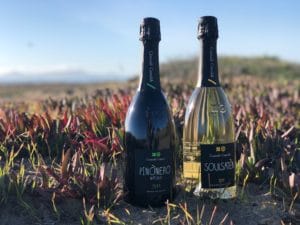
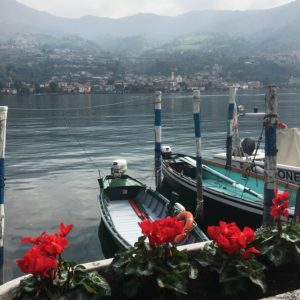

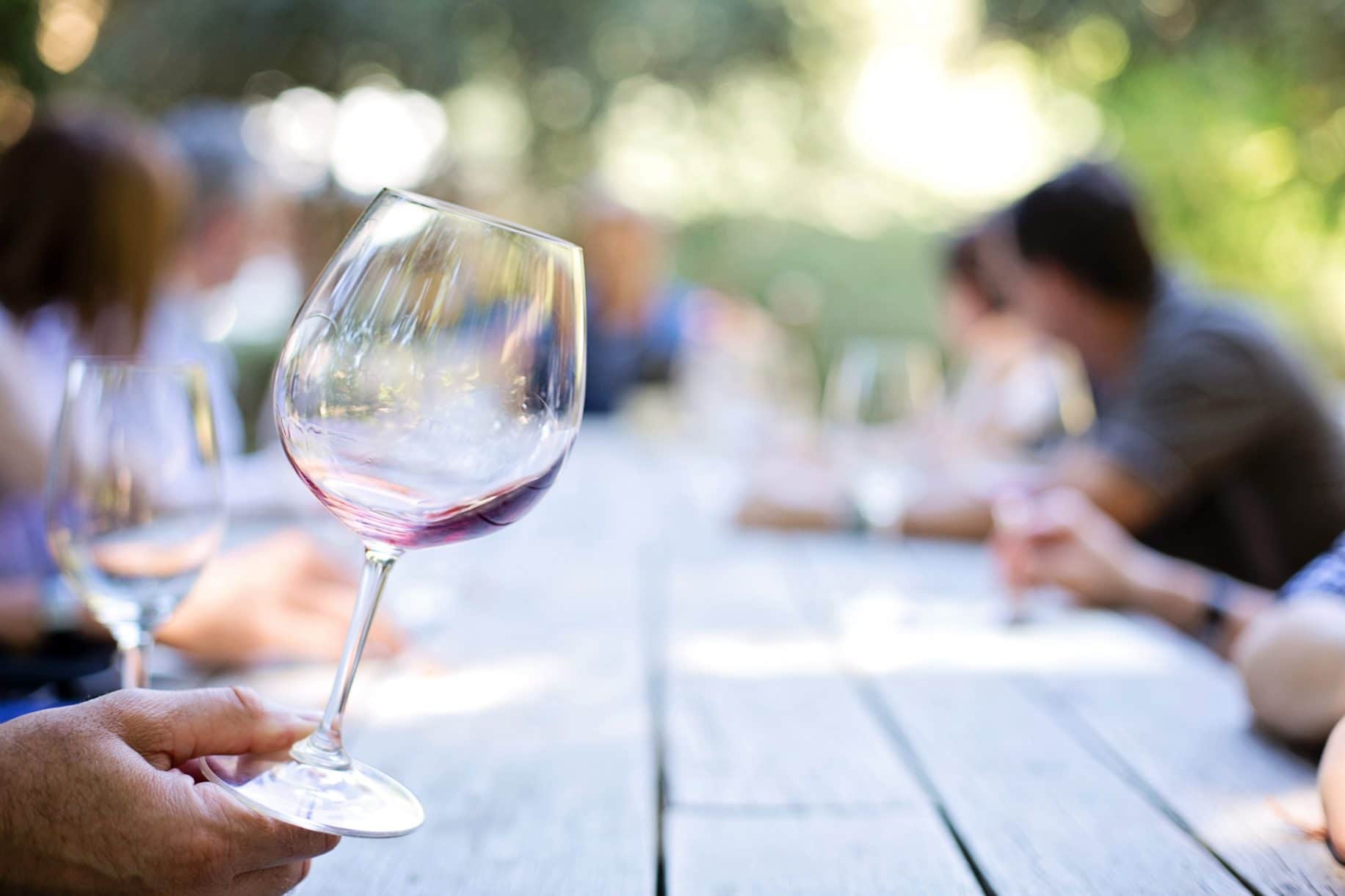

You must be logged in to post a comment.